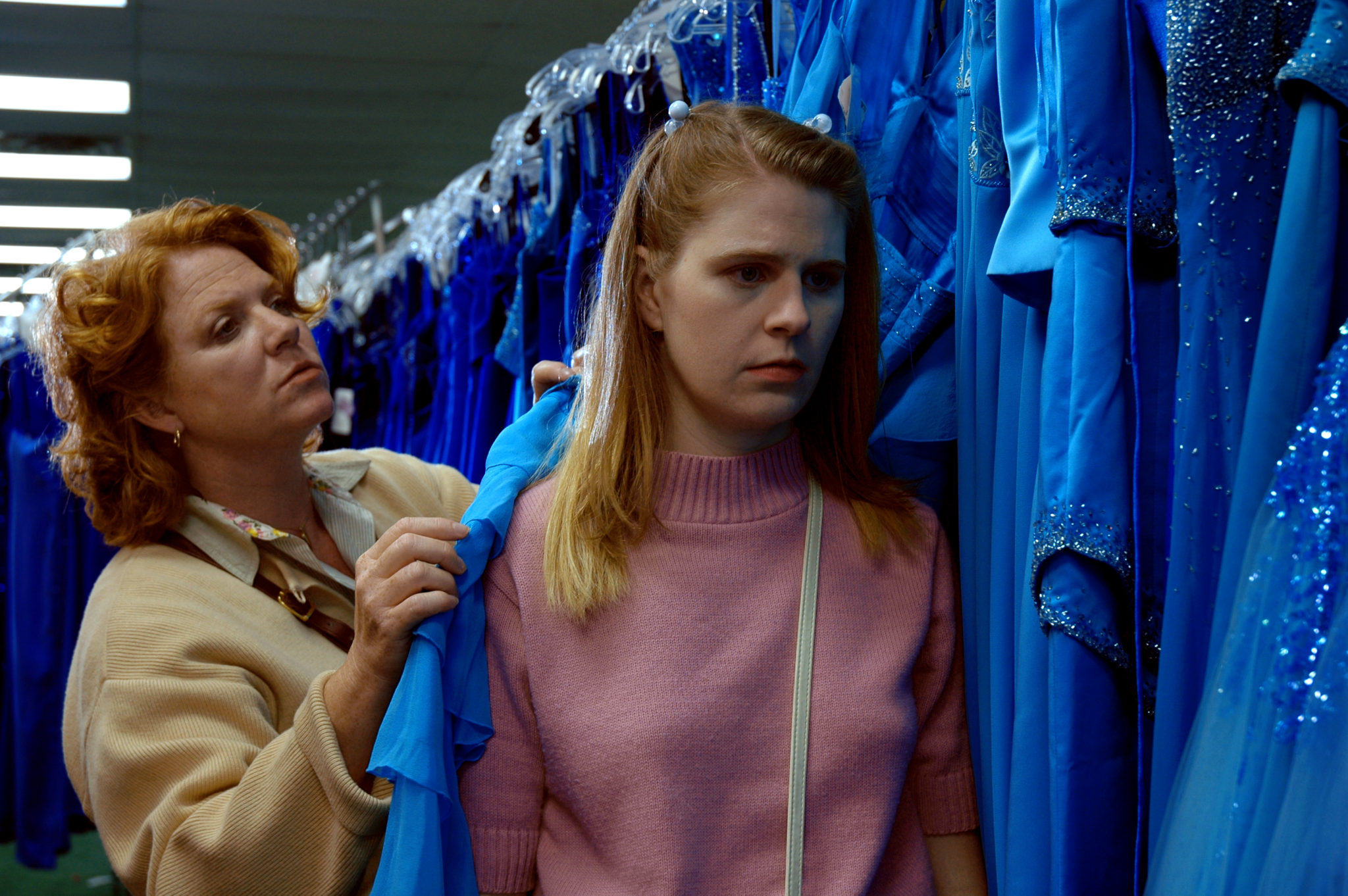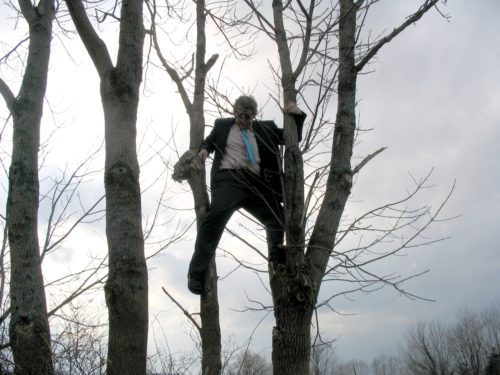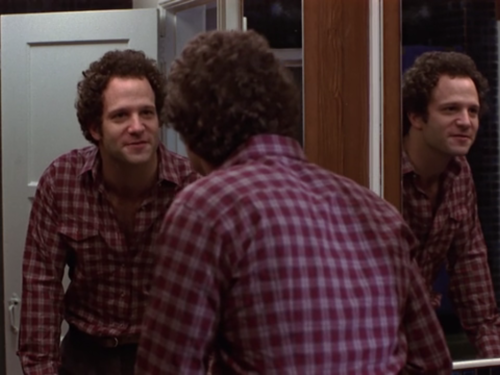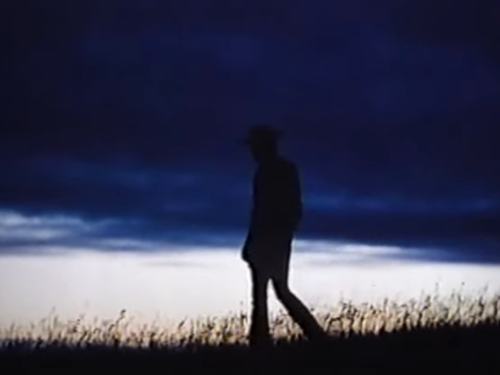Rather than follow the pervading trends in American independent film, Gretchen uses its style to explore the limits of ironic humor and identity
Wes Anderson once said that someday he would like to make a film without any jokes in it. That day does not appear to be coming any time soon.
The potential in Anderson’s ambitions for a jokeless film is not a matter of the director making a serious and humorless drama. Anderson has always concerned himself with serious subjects — love, death, grief, abandonment and divorce. The potential has more to do with how he uses his style, for too often his style functions like a joke.
Beyond the outright comedic elements, there is a preciousness to Anderson’s films that often shows him to be an overprotective creator. The Anderson touch — the tableau-like framing, diorama-style sets filled with retro-trinkets and neatly ordered character blocking, the camera zooms and whip-pans, heavy use of slow motion and montages set to ’60s pop songs — allows his films to be incredibly moving, yet whimsically stylized to a point that settles audiences into states of reassurance and familiarity. The gravity of his characters’ messy emotional conflicts are established with such nuance but are often diminished as Anderson resorts to clever displays of technical prowess to shield his characters and audience from a lurking danger and sadness.
Anderson’s caricatured, adolescent-minded characters navigate playground universes set mostly in the past or in undefined time periods. These worlds are scored with songs from Anderson’s childhood and polished off with homages to the films that influenced him. Characters like the Tenenbaums, Rushmore’s Max Fischer and The Life Aquatic’s Steve Zissou have a great amount of control over their environments. Their identities are often painted on the walls or perfectly expressed through costumes. Things may go wrong in their little self-contained worlds, but they are able to reconcile it and find solace through an ability to re-choreograph their surroundings to fit some new, yet nostalgia-bound, equilibrium. Anderson’s style creates a dilemma between facing the grief and pressures that run through his films and falling back into the safety of a self-styled refuge, an adolescent past within the present, beyond the roughness of the actual world.
As his most recent films — Moonrise Kingdom, The Grand Budapest Hotel and Isle of Dogs — grow more extravagant, I can’t help but feel Anderson is burrowing further into the comfort zone of his own style. That’s not an accusation of Anderson using style for style’s sake, but his films operate under a sort of absolute style where everything is so methodically situated in its right place that the creative control he exerts over his work also acts as a constraint. His films are so much his own, being so strictly organized and corralled under his command, that their self-contained eccentricities can come across as guarded and conservative. This is not always evident with all of the vibrant colors and lively soundtracks, but it is precisely through the sort of innocent sanctuaries formed out of his nostalgia-driven aesthetic that his films show an aspiration to pull the curtain (as he literally does at the end of Rushmore) and leave the world behind. They offer a vision that aspires for an isolating control over the self and one’s environment, demonstrating a desire for the ability to not just build one’s own little world, but to block out the wildness of life itself. It’s a disappointment when such a unique style — for it is so often something to marvel at! — is used to merely tidy up the messy emotional conflicts established in his films, to comfort his audience with an aesthetic cushion, rather than confront the complexities he comes so close to reckoning with.
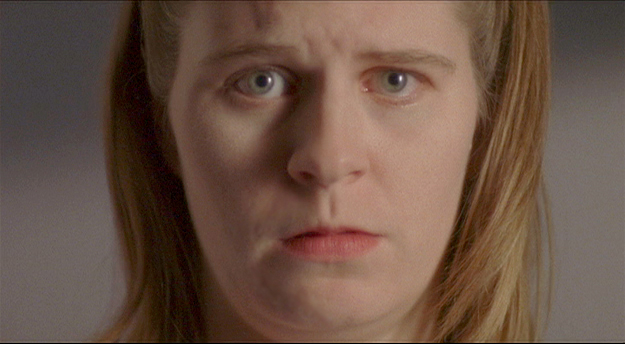
Over the past two decades, Anderson’s style has proven to be one of the most influential and copied aesthetics in American filmmaking. The above-mentioned “preciousness” of his work was quickly recognized for its entertainment potential and reproduced by studios into the “quirkiness” found in all of those slightly melancholic, mostly forgettable, Sundance films that took over the world in the mid-to-late 2000s. It was the perfect package for studios to release films with somewhat risky or timely subject matter (Juno’s teen pregnancy, Zach Braff’s struggles with depression in Garden State) and a thick coat of stylistic sheen lathered-on to keep audiences at a safe distance from any truly challenging emotions or ideas. This formula ushered in a generation of benignly thoughtful and “independent” movies, creating the impression that viewers were watching relevant works of social substance and, above all, style.
The least stimulating films influenced by Anderson have been comedies like Napoleon Dynamite (2004) that mimic the aesthetics of Rushmore and The Life Aquatic for goofy, ironic and often mean-spirited purposes. Their formalism creates a rigid awkwardness, reducing Anderson’s distancing effects to a simplistic detachment. The characters are portrayed as pathetically unaware of themselves, as the heavy stylization in these films works to trap them in their one-dimensional identities. The uniform worlds that Anderson builds so lovingly around his characters are erected to place viewers in a position to laugh and point at the unfortunate figures on screen.
Luckily, we have Gretchen (2006), a film by Steve Collins that recognizes the limits and consequences of holding to such heavy stylization. The film arrived in the midst of the Dynamite hype (Collins was in post-production on Gretchen when Napoleon Dynamite premiered), but while Gretchen shares many of the same twee affectations — the retro dorkiness of its sets and costumes, the stiff characters, the pastel color schemes and adult actors playing high schoolers — Collins’ style comes with a critical awareness that leaves Napoleon Dynamite looking like a popsicle stick joke.
Gretchen – Trailer from Steve Collins on Vimeo.
Courtney Davis plays the titular Gretchen, a high school misfit who speaks in an uneven register, walks in stutter-steps and dresses like a member of The Shaggs. Gretchen lives with her single mother (Freaks and Geeks’ Becky Ann Baker) and has a father, Herb (Stephen Root, Office Space, No Country for Old Men), whom she hasn’t seen in years. The film begins with her budding romance with Ricky Marichino (John Merriman), a denim-clad troublemaker who envisions himself as a convenience-store Casanova. Gretchen becomes obsessed in her new love life. After being caught with Ricky in her room late at night, she promises to be honest and open about herself with her supportive mother, yet she continues to hide her romantic conquests, her less-than-stellar grades and other emotional dilemmas. When Gretchen catches Ricky cheating on her with bad girl Marla (Yasmine Kittles), she inflicts violent revenge and is sent away to an anger management treatment center called Shady Acres. There, she meets another outcast love interest, a faux rebel named Nick (Macon Blair, Blue Ruin, The Florida Project), who also cheats on her, which results in more violence and eventually leads Gretchen to seek out her distant father.
Related: Breaking The Routine: Frank V. Ross And The Disruptive Style Of ‘Audrey The Trainwreck’
Out of the boxed-in uniformity that became so fashionable in the wake of Anderson, Collins establishes an overbearing style system that forces Gretchen’s characters to conform under or struggle against the film’s environments. The closed-framing, stiff character blocking and visual symmetries make Gretchen’s high school a rigid environment populated by cliched types. The hallways feature archetypal jocks who move on cue with the camera as they sweep defenseless nerds off-screen like props; Marla’s rebel cliques walk in symmetrical formations similar to Steve Zissou’s squad in The Life Aquatic and wear matching jean jackets over their gym clothes. These figures function within the rhythms of their environments. Everything is in its right place, and the characters all assume their positions, for the most part.
It is within these ordered settings that Gretchen sticks out like a sore thumb. Visually, she is often set out of sync with the flow of her surroundings, being crowded into tightly blocked frames, moving against the currents of the high school halls or dancing out of step at what might be cinema’s dopiest rave party. Her exterior is in direct, albeit uncoordinated, tandem with her interior states. She sings out loud in public when she feels loved; she rips toilet seats off their hinges when she feels betrayed. She is a twitch in the system; a bleeding heart stuck in a world of stoics.
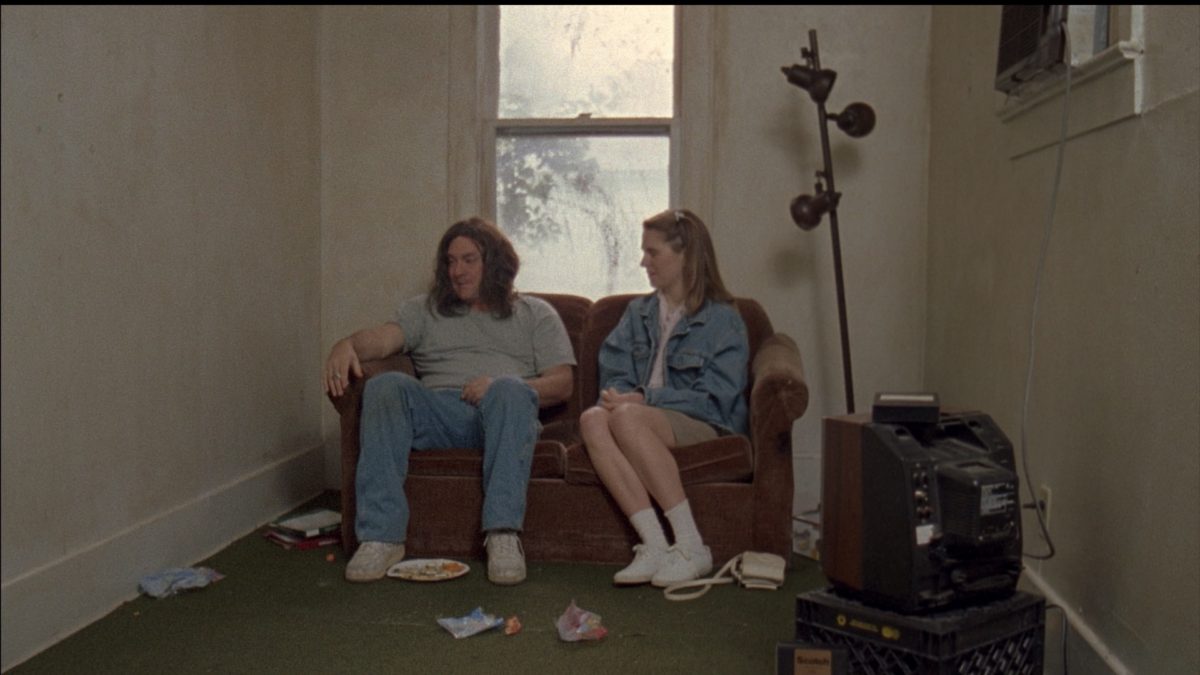
But with this sensitivity, Gretchen leaves herself dangerously open to those around her. Throughout the film, she is bombarded by characters trying to define her or pin her down. She is a “prude” when she won’t have sex with Ricky; she gets bad grades in English for what her teacher considers “purply prose.” She appears to take their words to heart, processing whether or not their conceptions of her are true, or if she could mold herself to fit them. When Marla tells Gretchen that she will never be with Ricky because she isn’t a “slut,” we can sense in Gretchen’s uncertain response to the accusation that she is trying the word on, searching within herself — wondering whether she could potentially be a slut. Ultimately, she never fits into any set “type,” no matter how much she wishes she could, failing for the best into an idiosyncratic identity.
This pressure to fit into a caricatured, Andersonesque identity runs throughout the film. The first scene involves Gretchen staring uncomfortably at a ball of clay in her high school art class. The disembodied voice of a teacher announces the assignment: “Who are you?… Put this into your clay.” This is the type of challenge that an Anderson character would thrive on. As Dave Kehr says in an essay on Rushmore, it is central to Anderson’s aesthetic to create the feeling that we truly know a character through shorthanded notions, such as a gestural tic, unique costuming or through an association with a particular object or prop. His characters are presented as if fully “established” on first glance. For Collins, to be able to sum up an entire identity so resolutely is nothing so positive. Ricky, Marla and Nick are introduced with an Anderson-like economy to convince us that we “know” them on first impression: Ricky is first seen in the same art class, sneering as he poses next to a crudely sculpted phallus he made for Gretchen; Marla is depicted as the typical “bad girl,” who smokes in the girl’s room, and stands with her head defiantly cocked to the side. Nick wears a black duster and long, scraggly black hair while cursing out his counselors.
But these characters’ exteriors are not always in harmony with the bodies and minds who wear them. Collins shows us the dangers of seeking self-articulation through superficial fashion and representative gestural tics. And as their environments seem to be encouraging them to fall into such indicative, clear-cut forms of identification, we catch glimpses of imaginations squirming under the costumes as Collins draws out the strain of their poses. Marla winces when she inadvertently defines herself as a slut. Nick, by far the most extravagantly styled figure in the film, explodes with theatrical notions of rebellious behavior, yet when confronted on the meaning of a Pink Floyd lyric he uses during one of his protests (“All in all we’re just another brick in the wall”), he refuses the challenge and flees, leaving his feigned ideology to stand unsubstantiated.
Through Herb, Gretchen’s father, Collins takes the identity-on-the-sleeve form of characterization to a distressing place. A mere glance is enough to recognize that Gretchen’s father is a composite of his daughter’s two Romeos, Ricky (the denim-on-denim) and Nick (the hair) wrapped into one foreboding presence of arrested development. Like Ricky, whose blind adherence to the conventions of his bad boy image makes him the most typical of all Gretchen’s characters, Herb is a figure trapped in the act he played as a teenager. He has physically outgrown his rebel persona, yet still wears the outfit and demonstrates no means of adapting beyond his old poses. He speaks more in nervous, fragmented twitches than sentences; he struggles to hold his job as a burger flipper, he’s a failure at keeping up a home and incompetent in his relationship with his daughter — he eventually abandons her again. Where Anderson romanticizes his characters’ adolescence of mind and spirit, Collins shows Herb to be a man whose entire life force has been exhausted on his outdated shell of style. It is a pained vision of an adult whose identity planted its roots in general notions of “coolness” and unfocused rebellion. He finds himself floundering and lost in the exact social systems he bucked in his adolescence.
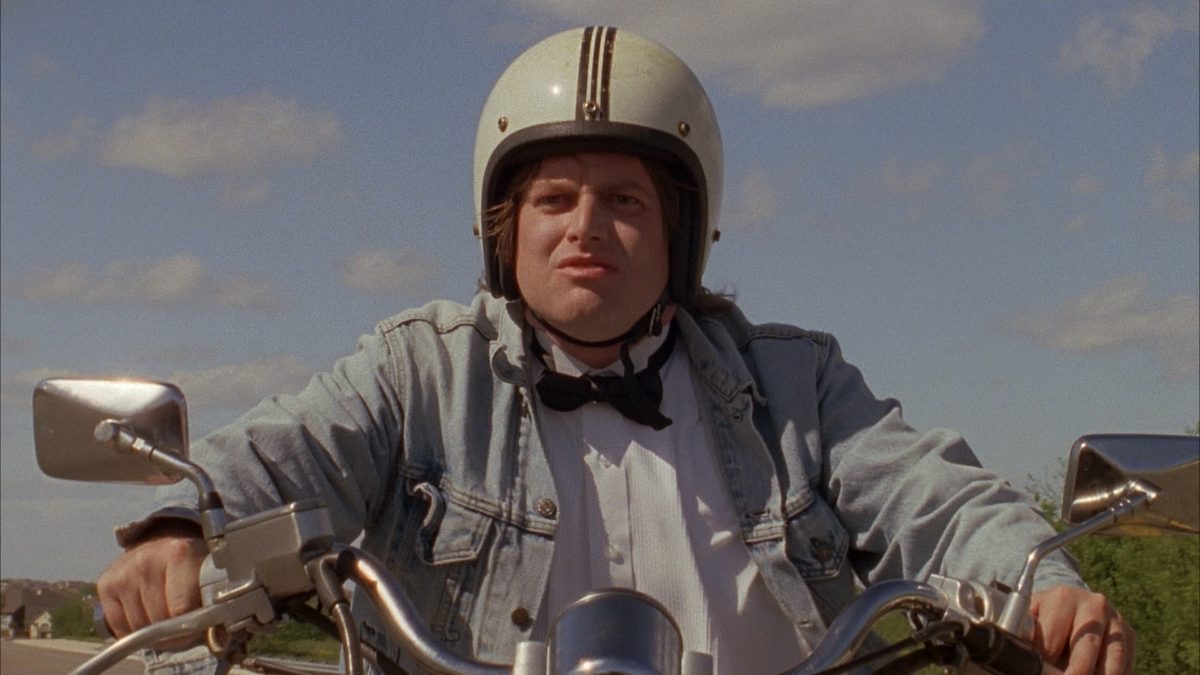
Upon its release, some reviews criticized Gretchen for not sticking to its initial comic tone. But the willingness to make shifts into harsher dramatic territory without the buffer of irony or whimsicality stands as one of Gretchen’s greatest strengths. Where Anderson and his acolytes tend to layer their fantastic style on thick to alleviate the potentially uncomfortable emotional edges, Collins alleviates the stylization so that the film can plunge into more complicated understandings of its characters and their conflicts.
A counselor tells Gretchen that she is caught in a pattern of falling hard for bad guys, having her heart broken and then lashing out with violence. Certain patterns play an important role in the structuring of the film as well. Collins will often stage a scene through comic means, and repeat or allude to the same scene later with an added weight of circumstance. Initially, Gretchen’s impulsive flights into rage are treated humorously. Her brutal beatings of Marla and another girl at Shady Acres for kissing her men are played for laughs by tinting the screen red over a closeup on Gretchen, or abruptly cutting before the attack to its aftermath of Marla tending her wound with a Maxi Pad. The third time Gretchen is about to strike, she follows a rave girl, who has been kissing Nick, into the bathroom. When she approaches the stall after her, she peeks in to find the girl crying and verbally abusing herself. Catching this private display of naked emotion forces Gretchen to step back and take a moment to relate. There are no tinted frames or jokey quick cuts out of the moment as we watch Gretchen begin to empathize with the crying girl as an individual, not typecast her as another “slut” or “enemy.”
In these scenes where Collins lets his film slip out of its more ornamented style, the complexities of his characters’ emotional conflicts and the processes of their developments come into greater focus. Upon Gretchen returning to Shady Acres after Herb’s abandonment, Collins includes a montage of Gretchen creating a ceramic tree, echoing the earlier art class scene where she was told to put herself into her art. The tempo of the film slows, a contemplative tone takes over as the previously wide, tableaux-style camera work makes way for a series of extreme closeups. Gretchen takes to the clay with a sense of control, the camera covering the details of her slow, delicate brush strokes and catching the bubbly textures of the clay baking in the kiln. Gretchen works to put its characters’ identities in motion. Its latter-half montages chart processes of self-composition, putting us through the inner workings of Gretchen’s best efforts at articulating and expressing who she is becoming. She can’t sum herself up with a new costume; a scene of her trying on prom dresses shows the strain of finding the perfect look to be overwhelming and destructive. The growth in her character comes through the thought-filled movements of her painting and sculpting. We see Gretchen developing a personal and explorative form of creative control.
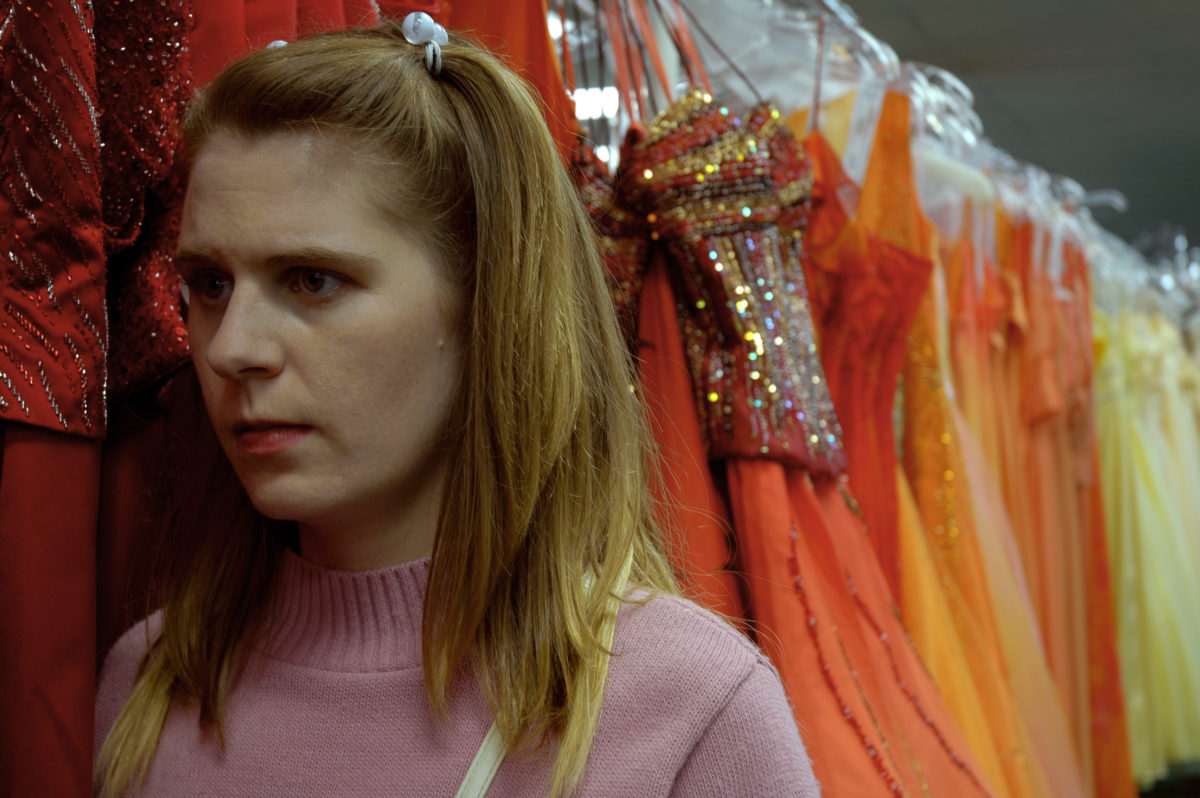
Upon returning to her public high school, Gretchen is asked to prom by Ricky, and later told that he expects her to do drugs with him and have unprotected sex. Gretchen lies to her mother about it, withholding the truth until she nearly explodes. When she finally opens up to her mother, the film makes another stylistic realignment. Collins holds us in the moment as Gretchen unloads her baggage about Ricky, her dad and her insecurities without the aid of stylistic embellishments or comical flourishes. As Gretchen’s mother comforts her daughter by gently stroking her hair, earnestly repeating, “You are beautiful,” the film strips away any trace of irony and establishes a new order of direct, messy and sincere communication; of tactile interactions and expressive risk-taking beyond the pressures and rigidity of the caricatured world outside.
The final montage sequence leading to Gretchen’s arrival at prom is an act of quiet, personal triumph in her rejection of the world’s attempts to typecast her. As She prepares for prom with her mother, Collins uses a series of mirrored actions to echo earlier moments when Gretchen was at the mercy of influences beyond her control. The actions and details of the mother delicately layering flowers into Gretchen’s braids shows a character being made-up on her own terms and not to please a lover or an unreceptive father figure. The detailed closeups of her mother’s hands match Gretchen’s careful gestures while making her ceramic tree. A later shot of the two women leaving a moped-riding Ricky in their rearview mirror recalls Gretchen being left behind by Herb. In a film made up of figures ready-made in their dress and demeanor, the gentleness and care in costuming Gretchen for prom radically reimagines the film’s notions of identity and moves below the surfaces of fashion into a more profound process of discovery.
At prom, Gretchen rejects Ricky and enters the dance by herself. Collins gives us a brief vision inside Gretchen’s mind. She imagines an idyllic scene as her fellow prom-goers dance in a circle around her as Gretchen stands with her arms outstretched, facing the ceiling. Collins pops the dream bubble and returns to Gretchen sitting alone with the other misfits waiting for a dance. The film avoids slipping into a nostalgic vision of the pains of youth. We are not reassured by seeing Gretchen finally fit in by perfectly orchestrating her big moment as Max Fischer does at the conclusion of Rushmore or showing off her “style” in a talent show like Napoleon Dynamite. Gretchen ends with its hero alone, facing forward, her eyes wide open, putting herself out there and dealing with the consequences in a world she cannot control. Collins closes no stage curtains; he denies viewers the opportunity to shy away from Gretchen taking on the most worthy and delicate of struggles — just being yourself.
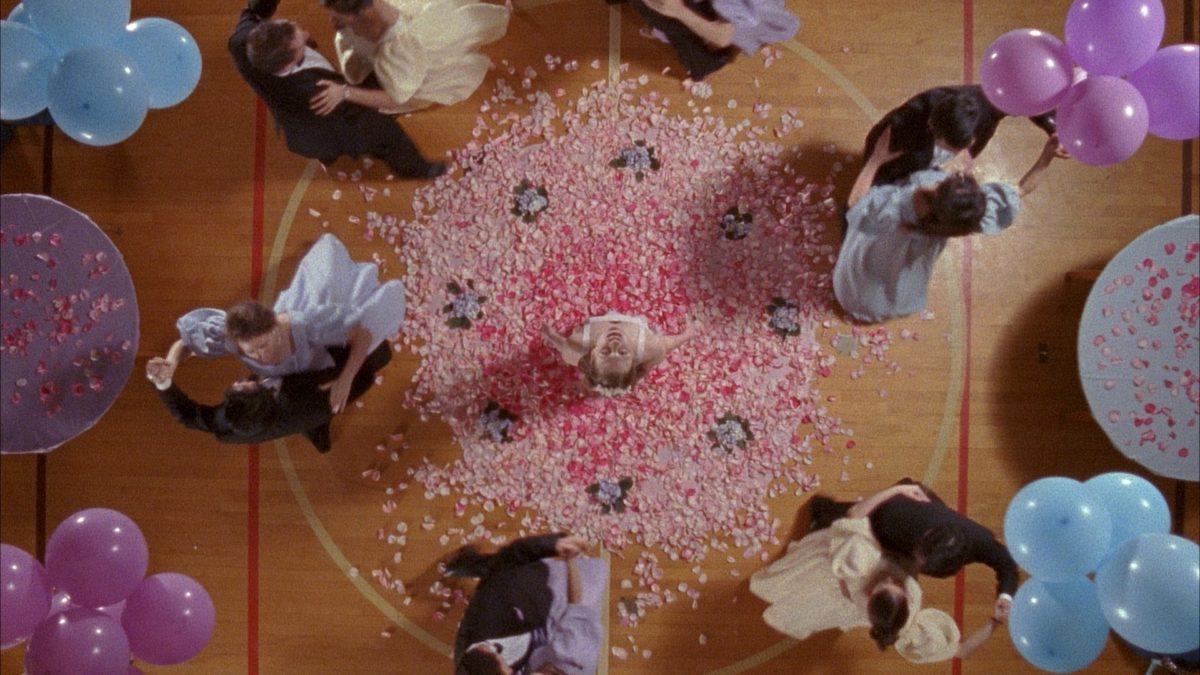
Follow Split Tooth Media and Brett on Twitter and Letterboxd
Stream Gretchen here
(Split Tooth may earn a commission from purchases made through affiliate links on our site.)

